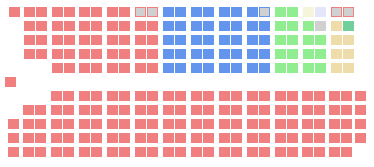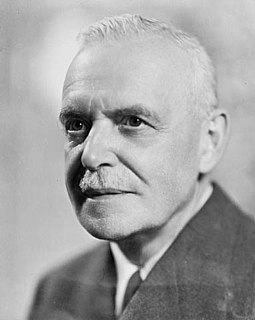| ||||||||||||||||||||||||||||||||||||||||||||||||||||||||||||||||||||||||||||||||||
245 seats in the 18th Canadian Parliament 123 seats needed for a majority | ||||||||||||||||||||||||||||||||||||||||||||||||||||||||||||||||||||||||||||||||||
|---|---|---|---|---|---|---|---|---|---|---|---|---|---|---|---|---|---|---|---|---|---|---|---|---|---|---|---|---|---|---|---|---|---|---|---|---|---|---|---|---|---|---|---|---|---|---|---|---|---|---|---|---|---|---|---|---|---|---|---|---|---|---|---|---|---|---|---|---|---|---|---|---|---|---|---|---|---|---|---|---|---|---|
| ||||||||||||||||||||||||||||||||||||||||||||||||||||||||||||||||||||||||||||||||||
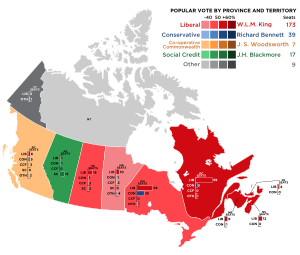 | ||||||||||||||||||||||||||||||||||||||||||||||||||||||||||||||||||||||||||||||||||
| ||||||||||||||||||||||||||||||||||||||||||||||||||||||||||||||||||||||||||||||||||
The Canadian federal election of 1935 was held on October 14, 1935. to elect members of the House of Commons of Canada of the 18th Parliament of Canada. The Liberal Party of William Lyon Mackenzie King won a majority government, defeating Prime Minister R. B. Bennett's Liberal-Conservatives.

The House of Commons of Canada is a component of the Parliament of Canada, along with the Sovereign and the Senate. The House of Commons currently meets in a temporary Commons chamber in the West Block of the parliament buildings on Parliament Hill in Ottawa, while the Centre Block, which houses the traditional Commons chamber, undergoes a ten-year renovation.
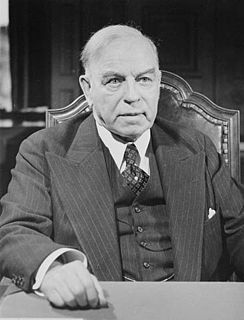
The 18th Canadian Parliament was in session from February 6, 1936, until January 25, 1940. The membership was set by the 1935 federal election on October 14, 1935, and it changed only somewhat due to resignations and by-elections until it was dissolved prior to the 1940 election.
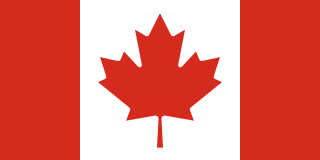
Canada is a country in the northern part of North America. Its ten provinces and three territories extend from the Atlantic to the Pacific and northward into the Arctic Ocean, covering 9.98 million square kilometres, making it the world's second-largest country by total area. Canada's southern border with the United States is the world's longest bi-national land border. Its capital is Ottawa, and its three largest metropolitan areas are Toronto, Montreal, and Vancouver. As a whole, Canada is sparsely populated, the majority of its land area being dominated by forest and tundra. Consequently, its population is highly urbanized, with over 80 percent of its inhabitants concentrated in large and medium-sized cities, many near the southern border. Canada's climate varies widely across its vast area, ranging from arctic weather in the north, to hot summers in the southern regions, with four distinct seasons.
Contents
The central issue was the economy, which was still in the depths of the Great Depression. Bennett, in office since the 1930 election, had done little to stimulate the economy during his first few years, believing that a policy of high tariffs and trade within the British Empire would correct the depression. In the last months of his time in office, he reversed his position, however, copying the popular New Deal of Franklin Roosevelt in the United States. Upset about high unemployment and inaction by the federal government, voters were unwilling to allow the Liberal-Conservatives to continue to govern, despite their change of policy.
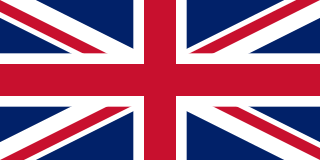
The British Empire comprised the dominions, colonies, protectorates, mandates and other territories ruled or administered by the United Kingdom and its predecessor states. It originated with the overseas possessions and trading posts established by England between the late 16th and early 18th centuries. At its height, it was the largest empire in history and, for over a century, was the foremost global power. By 1913, the British Empire held sway over 412 million people, 23% of the world population at the time, and by 1920, it covered 35,500,000 km2 (13,700,000 sq mi), 24% of the Earth's total land area. As a result, its political, legal, linguistic and cultural legacy is widespread. At the peak of its power, the phrase "the empire on which the sun never sets" was often used to describe the British Empire, because its expanse around the globe meant that the sun was always shining on at least one of its territories.

The New Deal was a series of programs, public work projects, financial reforms, and regulations enacted by President Franklin D. Roosevelt in the United States between 1933 and 1936. It responded to needs for relief, reform, and recovery from the Great Depression. Major federal programs included the Civilian Conservation Corps (CCC), the Civil Works Administration (CWA), the Farm Security Administration (FSA), the National Industrial Recovery Act of 1933 (NIRA) and the Social Security Administration (SSA). They provided support for farmers, the unemployed, youth and the elderly. The New Deal included new constraints and safeguards on the banking industry and efforts to re-inflate the economy after prices had fallen sharply. New Deal programs included both laws passed by Congress as well as presidential executive orders during the first term of the presidency of Franklin D. Roosevelt.
The Liberal-Conservatives were also suffering severe internal divisions. During his first years in office, Bennett had alienated those in his party who supported intervention in the economy. His last minute conversion to interventionism alienated the rest of the party. Former cabinet minister H.H. Stevens left to form the Reconstruction Party. Senior minister Sir Joseph Flavelle announced he would be supporting the Liberals.
The Reconstruction Party was a Canadian political party founded by Henry Herbert Stevens, a long-time Conservative Member of Parliament (MP). Stevens served as Minister of Trade in the Arthur Meighen government of 1921, and as Minister of Trade and Commerce from 1930 to 1934 in the Depression-era government of R. B. Bennett.
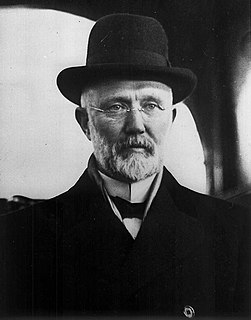
Sir Joseph Wesley Flavelle, 1st Baronet was a Canadian businessman.
Voters opted for Mackenzie King's promise of mild reforms to restore economic health. The Liberals crushed the Tories, winning 171 [1] seats to the Liberal-Conservatives' 39, the worst ever performance by the Tories until their collapse in 1993. The Liberal Party would continue to hold power until 1957.
The 1935 election was also important in it saw the final demise of the Progressive Party and the United Farmers of Alberta. Two new movements rose out of the west, however. The new Co-operative Commonwealth Federation, a social democratic party, first competed in this election and won seven seats, promising social reform. The Social Credit Party of Canada was even more successful, capturing seventeen seats on its platform of monetary reform despite winning less of the popular vote than the former.
The Progressive Party of Canada was a federal-level political party in Canada in the 1920s until 1930. It was linked with the provincial United Farmers parties in several provinces, and it spawned the Progressive Party of Saskatchewan, and the Progressive Party of Manitoba, which formed the government of that province. The Progressive Party was part of the farmers' political movement that included federal and provincial Progressive and United Farmers' parties.

The United Farmers of Alberta (UFA) is an association of Alberta farmers that has served different roles in its 100-year history – as a lobby group, a successful political party, and as a farm-supply retail chain. As a political party, it formed the government of Alberta from 1921 to 1935.
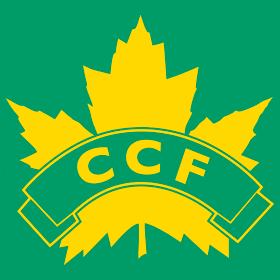
The Co-operative Commonwealth Federation (CCF) was a social-democratic and democratic socialist political party in Canada. The CCF was founded in 1932 in Calgary, Alberta, by a number of socialist, agrarian, co-operative, and labour groups, and the League for Social Reconstruction. In 1944, the CCF formed the first social-democratic government in North America when it was elected to form the provincial government in Saskatchewan. In 1961, the CCF was succeeded by the New Democratic Party (NDP). The full, but little used, name of the party was Co-operative Commonwealth Federation (Farmer-Labour-Socialist).





